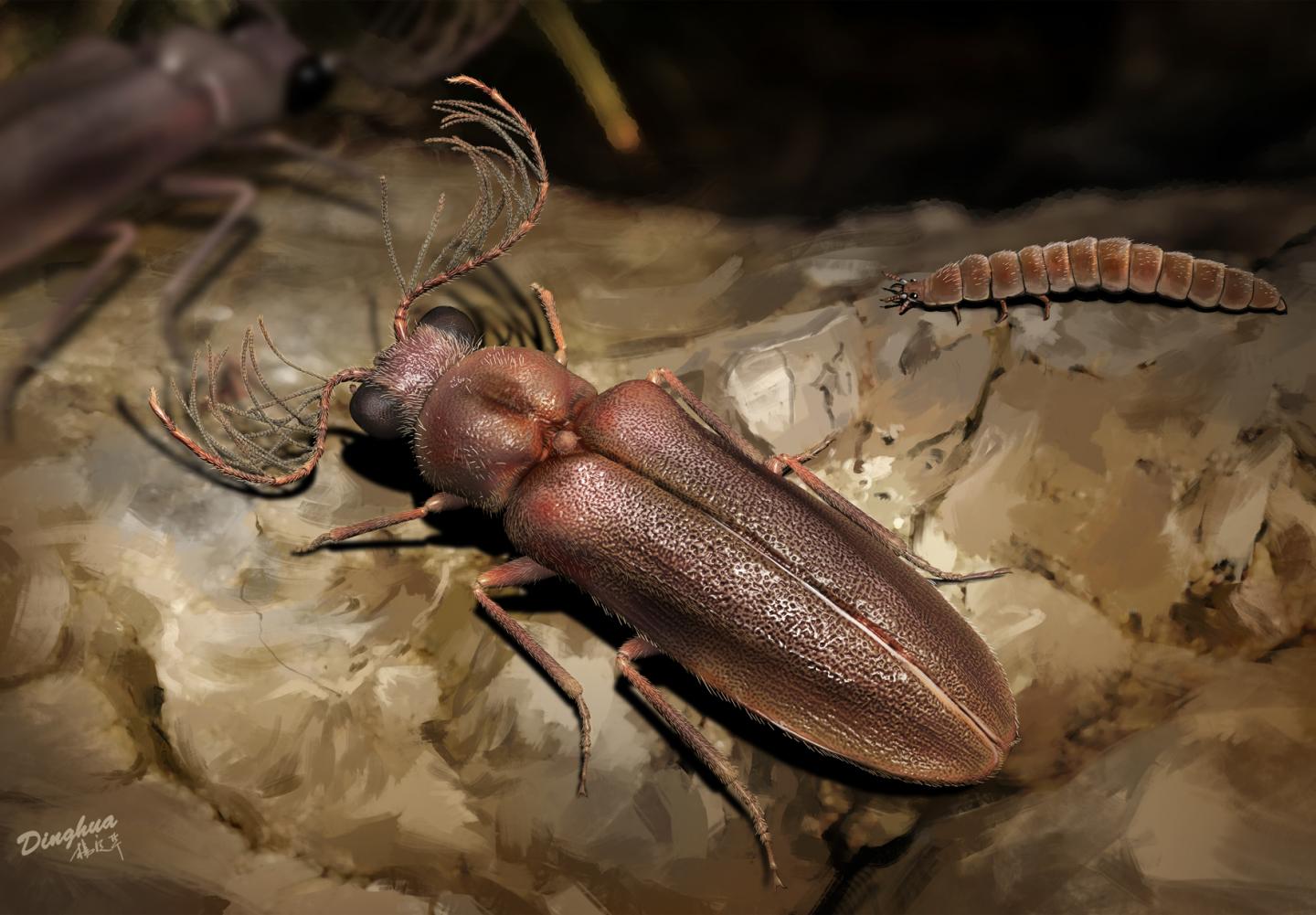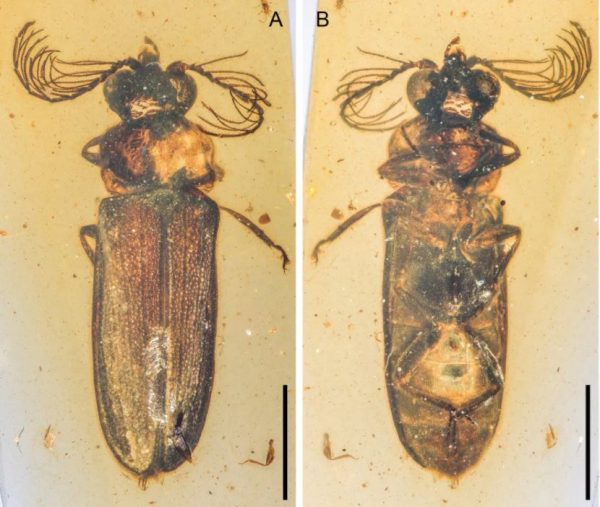Scientists discover 99-million-year-old beetle that produced light with its abdomen

Artistic reconstruction of a Cretophengodes azari drawn by Dinghua Yang
Kathmandu, January 20. Researchers have recently discovered a fossil of a 99-million-year-old bioluminescent beetle well-preserved in a piece of amber in northern Myanmar.

In the research article published in the Royal Society Journal, the scientists have described that the fossil belong to the Cretaceous period when the tropical rainforest around the site of discovery was home to millions of insects.
The researchers have named the Bioluminescent beetle “Cretophengodes azari” which belongs to “Elateroidea”, the superfamily of terrestrial light-producing animals.
Although Elateroidea comprises more than 24,000 known species of light-producing insects, the scientists have very little knowledge about their light-producing mechanism. This is because modern fireflies produce light via a different type of chemical reaction in their body.
Associate Professor and the co-author of the paper, Chenyang Cai said that the discovery could lead the scientist to uncover the mysterious puzzle of the evolution of Bioluminescent animals because the discovered fossil beetle is found to produce its own light from an organ attached to the abdomen.
Click here to read the detailed research article entitled “Cretophengodidae, a new Cretaceous beetle family, sheds light on the evolution of bioluminescence” published in the Royal Society Journal on January 20, 2021.
Also Read,
Facebook Comment
latest Video
Trending News
- This Week
- This Month

















